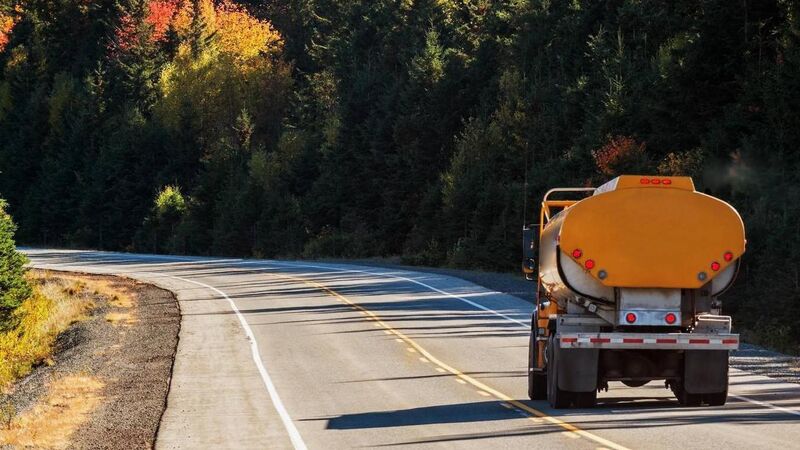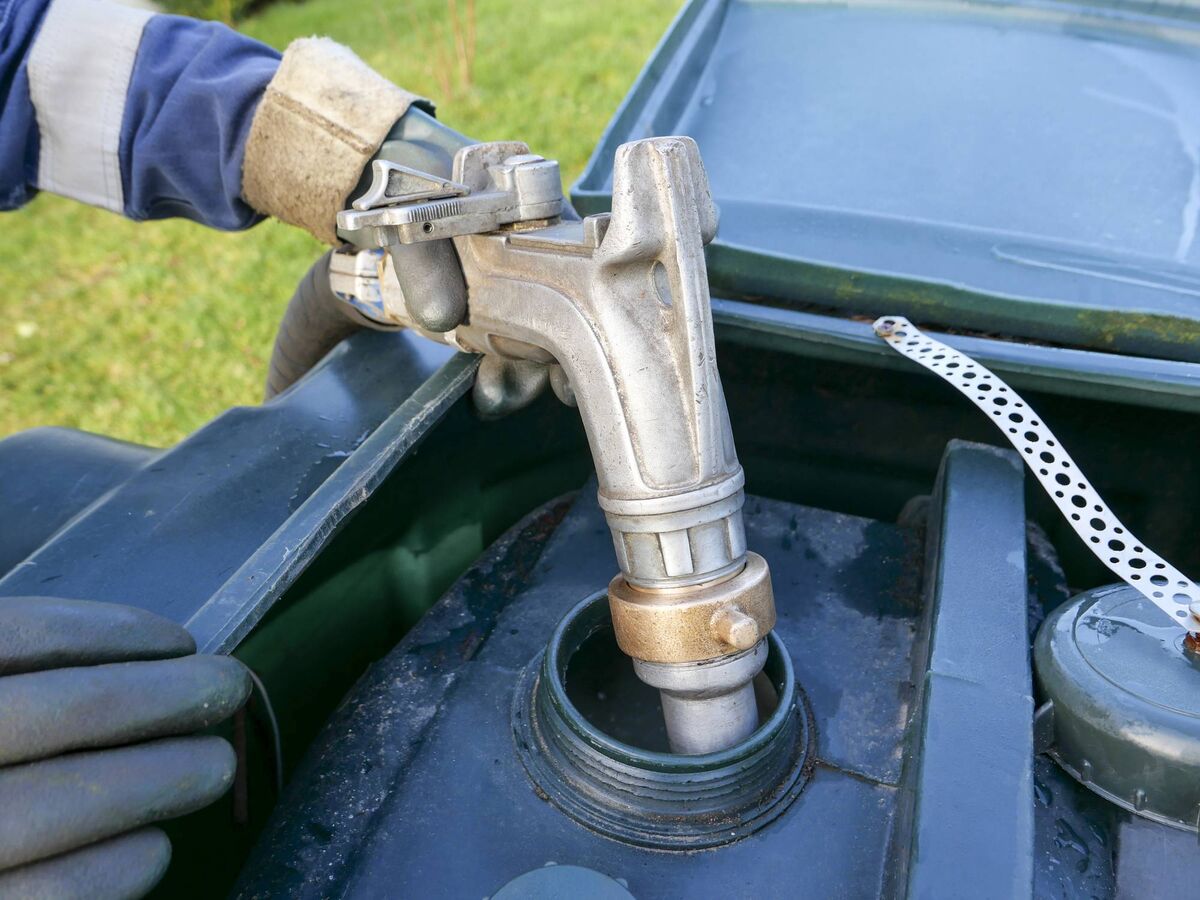Why don't more Irish homes use biofuel as a heating method?

With a small amount (2%) of HVO (biofuel) entering our home heating supply, could this be the beginning of a truly meaningful blend of fossil fuel to more planet-friendly alternatives? File pictures
This time last year, I wrote a piece specifically on biofuels, and I thought we were on the edge of change. Now, to my mind, biofuel, specifically hydrotreated vegetable oil (HVO), seemed like a good alternative route for some homeowners dragging their homes behind their good intentions into the light of low-carbon living.
We know kerosene is a highly emissive way to heat buildings. It’s dirty, expensive, unsustainable — the Dick Dastardly of home heating choices.
If you combust anything, and that includes even wood pellets and dry timber — well, according to determined purists, you’re not really joining hands in the great march to carbon-zero living.
Some 700,000 homes in Ireland are fitted with a kerosene boiler, and in the not-too-recent past condenser boilers for use with kerosene were grant-aided by the Sustainable Energy Authority of Ireland (SEAI), and could also receive several hundred euro towards heating controls. With the relentless promotion of the heat pump as the sole grant-aided heating source for deep renovations and any legal new build, that seems like a very, very long time ago. Oil boilers on offer today are for replacement use only. All are HVO-ready, and can seamlessly move from burning kerosene to burning HVO with a bit of light alteration.
Not all properties easily suit a heat pump. This is not only because of the levels of insulation required. We should all be striving for high levels of insulation whatever our building’s age, structural type or fuel source. The SEAI is careful to point out that a very specific heat pump assessment must take place before it will release the €6000 on offer for an SEAI-aided install through the one-stop-shop grant scheme.
Priced from €700 with some redeemable SEAI grant money, the heat pump assessment is a more forensic examination than the BER assessment. Focused on insulation levels, airtightness, and air exchanges, it’s dependent on a number known as the heat loss indicator (HLI) and the assessor must find the HLI to be two watts/Kelvin/sq m or less with adequate ventilation to match. This mechanism is frustrating to families with a good BER who have a relatively warm home, off the gas network, trying to fight free of carbon-heavy fuel.
However, the heat pump assessment is there to protect homeowners and landlords from installing expensive heat pumps that operate at low-water temperatures, into homes that won’t warm up the fabric, air, and water effectively before it slowly leaches out of the building.
To work, the power bill becomes electrifying in all the wrong ways. The tales plumbers tell of returning to a home and removing the recently installed heat pump, seem to all have a prologue of “We just went ahead without the SEAI assessment, it’s just a rip-off!”
Even as a regular advocate for the work of the SEAI, I don’t enjoy single-choice cul-de-sacs when it comes to upgrading my home. No, we’re not being coerced into deep-energy retrofit (yet) but take a look at the change in tone over in the UK — because it’s coming. I regard the oil boiler as a toxic inclusion that has to go as soon as logistically possible. Radiators in many homes are set up for a hot, reactive use, with a suspended or un-insulated floor. Tearing back into the property to install underfloor heating (ideal for good performance in a heat pump) is generally not cost-optimal. On this and other meters, many relatively low-energy homes remain far from two watts/Kelvin/sq m to snag that €6,000 of Government funding.
The carbon emissions from around 686,000 oil boilers cannot stand in the face of our carbon-zero future in Ireland. Their installation is now banned in new homes (depending on the date of planning permission), in the Government-led charge to an all-electric home heating future fronted by heat pumps of as much as 300% efficiencies. Progress remains slow, and reading around building forums on social media, scepticism remains high among second-hand homeowners clinging to kerosene boilers.
CLASSIFICATION
So why can’t we just tinker with the old boiler and jump into HVO? Well, it’s in part a matter of shifting the Government’s stance on this promising solution. HVO is still classified as a vehicular fuel and taxed as such. It’s in part a matter of upgrading at least half of the boiler stock (which is not HVO-ready) and perhaps getting some State aid in place for heating controls for everyone.
Grant Engineering (which supplies both fossil fuel boilers and heat pumps) director Niall Fay says: “Our HQ in Birr, Co Offaly, is heated with HVO biofuel and we have a number of customers already using HVO biofuel to heat their homes. Feedback has been very positive. Regarding the future of HVO, at present 40% of Irish households are reliant on liquid fuels for their heating and no de-carbonisation can occur in residential heat without including this sector.

EMISSIONS
“Utilising a HVO biofuel blend of 20% along with some supporting measures will result in a more than 40% reduction in carbon emissions in approximately 680,000 homes in Ireland. Utilising a 100% HVO blend would result in an 87% reduction in carbon emissions. We would not, however, advocate going to a 100% blend immediately, as this will have logistical and technical implications and may require a full burner change which would result in a cost of approximately €500.”
At present HVO is unable to be competitive in price to kerosene, according to Mr Fay — “firstly because it is misclassified as a ‘substitute fuel’ and not as a ‘biofuel’ in the Finance Act, and secondly because it is not able to Trade BOC certs as it can do with the Transport Fuels Obligation Scheme (RTFO), and thirdly because it is not supported in any subsidy (funded by Carbon Tax). These are issues which need to be addressed as an absolute priority by the Government.
“At Grant, we advocate a 20% blend of HVO to kerosene as all Grant-manufactured appliances will work without any adjustment.” A 20% blend is also “a balance of ambition and a just transition to ensure there is no overburden on the elderly, vulnerable, and fuel-poor”, he adds. “This is affordable and, if incentivised, can be straightforward as it would allow current kerosene-heated households to begin a transition of substantial de-carbonisation at a cost of no more than €500,” says Mr Fay.
“Homeowners can then begin a journey of making building fabric measures to air tighten their house and reduce fuel usage to the point of becoming heat pump-ready in a time frame of their choosing, subject to their economic circumstances, and as necessary.”
TRANSPORT SECTOR
The transport sector has been compelled to use HVO in a blend already, and this is organically building out a HVO distribution network as it’s the same network supplying kerosene. Niall Fay adds: “We believe that the Government should follow the already successful RTFO model and mandate a standard home heating oil with a 20% blend of HVO biofuel. HVO is readily available now, unlike hydrogen and biomethane which are some years away from commercial reality in Ireland.”
Substantial investments are beginning to be made in the supply chain of HVO biofuel in Ireland, for example in Ringaskiddy, Co Cork, where €30m has been invested in a site to initially store 38m litres of HVO biofuel.
Without a change to the classification of HVO and the lack of subsidies by the Government — where do we go with HVO? Is it a real player in the vital transition to low-carbon heating? Perhaps it’s the perception by the State, that once over potentially hundreds of thousands of new HVO-capable boilers are out there (and HVO is anywhere near the price of kerosene per litre), homeowners, who have insulated their homes and cut their fuel bills, will dig in and never give them up. Better a sharp sword than a jagged edge?
UPGRADES
Firebird Heating Solutions general manager Mark Doyle is in step with the 20% HVO blend advocated by Grant, and the logical use and upgrading of existing boiler systems as part of the journey to full de-carbonisation. He sees the benefit in upgrading 300,000 older boilers to high-efficiency condenser boilers greater with 95% efficiencies.
This would increase the boiler efficiency by 15%, even before the introduction of a 20% HVO blend. “The are currently 700,000 liquid fuel boilers in homes across the country. According to The Central Statistics Office, these homes in rural Ireland have the lowest BER ratings,” says Mr Doyle.
“The cost to upgrade each home could be between €50,000 and €80,000 (per SEAI statistics). Simply, this is money that rural Ireland does not have, and the labour required is being deployed on the new build market. We are failing in every aspect of the Government plan in relation to climate change.”
The Government’s “Renewable Heat Obligation Scheme 2024” will slip a meagre 2% HVO into the kerosene supply next year. Is there are glaring missed opportunity here for the most financially ideal but onerous solutions being promoted to cash-strapped households? Is the plodding timescale for achieving hundreds of thousands of heat-pump-ready housing an over-correction that’s obliterating promising players in our transition to fossil-free central heating?
HVO imported into Ireland is compliant with the EU Renewable Energy Directive (RED 2), palm oil-free, and also carries International Sustainability and Carbon Certification (fully traceable, deforestation-free, and supporting climate-friendly supply chains). With the potential for a 17% reduction of emissions with just a 20% blend used in a condensing boiler, surely HVO where appropriate is a greener, immediate solution for a huge swathe of our chill housing stock.

Subscribe to access all of the Irish Examiner.
Try unlimited access from only €1.50 a week
Already a subscriber? Sign in
CONNECT WITH US TODAY
Be the first to know the latest news and updates












